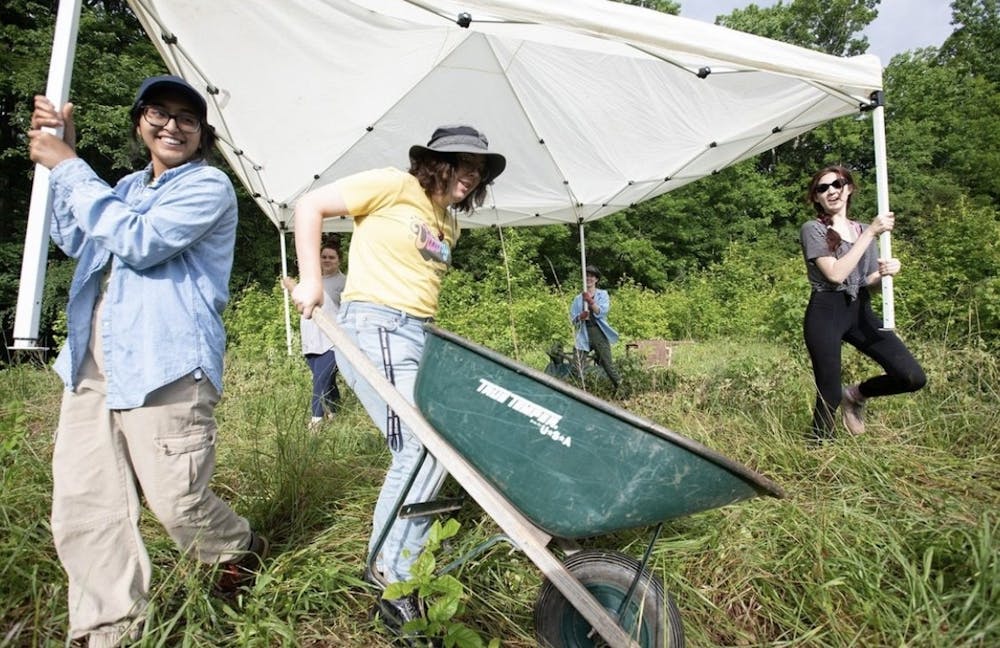The summer field school through UNC's archaeology program found archaeological evidence of pre-European indigenous settlements while excavating sites in Duke Forest and on the grounds of Ayr Mount.
The team, led by professors Heather Lapham and Steve Davis, excavated hundreds of sherds — broken shards of ancient North American pottery — and other historical artifacts.
“Often, when you first find a sherd, it looks just like a suspiciously flat rock and it can be hard to tell if it’s something – but once you realize it actually is a sherd, you're overjoyed,” Annie Veum, a junior history and archaeology major at UNC, said.
She said other things they found out in the field included lithic flakes, which are stones used to scrap tools against, the occasional arrowhead, lots of charcoal, an ax head and a piece of tobacco pipe bowl that can be dated to the early post-contact period.
According to Veum, being out in the field is a dirty and tiring experience due to hours of hard physical labor. Although, she said that the experience was exhilarating and made her realize how much she wanted to pursue archaeology for the rest of her life.
“Most of what you hear out in the field is voices; we talk to discuss what we’re doing, what we find, and simply to just entertain ourselves," Veum said. "But the best sound is the shouts of glee when somebody finds something, and then you rush over to see and join in. There's nothing quite like the exhilaration of finding something."
Elizabeth Maguire, a junior UNC student majoring in anthropology and archaeology, said she hopes to become an archaeologist.
“For me, I’m just interested in how humans lived and how they once lived,” Maguire said.
According to Davis, the field school team chose to excavate in Duke Forest and Ayr Mount due to historical evidence of remains from previous settlements in the areas.




